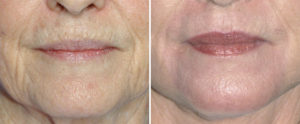
In the March 2008 issue of Plastic and Reconstructive Surgery, this very issue from a group in Chile was evaluated. They looked at long-term photographic results from 46 patients at 1, 5, and 10 year follow-ups. Their results showed that early results of skin texture was quite good. After 1 year, however, they were able to detect lines of demarcation between treated and non-treated skin and some skin had persistent redness. After 5 and 10 years, advantages were maintenance of good skin texture, elimination of fine wrinkles, and long-term correction of skin pigmenttaion. Some disadvantages included permanent hypopigmentation at the jaw-neck transition, skin telangectasias, and possible accentuation of skin redundancy.
This study supports what we have known for some time. Deep carbon laser resurfacing does an excellent job of removing many fine lines and wrinkles and this effect is maintained for some time. However, it does thin out the skin in some areas which is reflected in the development of telangectasias in the thinned skin. The line of demarcation between treated skin at the neck line is a well-known phenomenon. In other words, there are tradeoffs for wrinkle elimination and skin texture improvement….thinner skin with less pigment is some areas. These long-term effects support exactly why more superficial laser treatments are better. It may take more laser treatments to get similar effects but the results are more physiologic and natural.
Dr Barry Eppley
Indianapolis, Indiana


